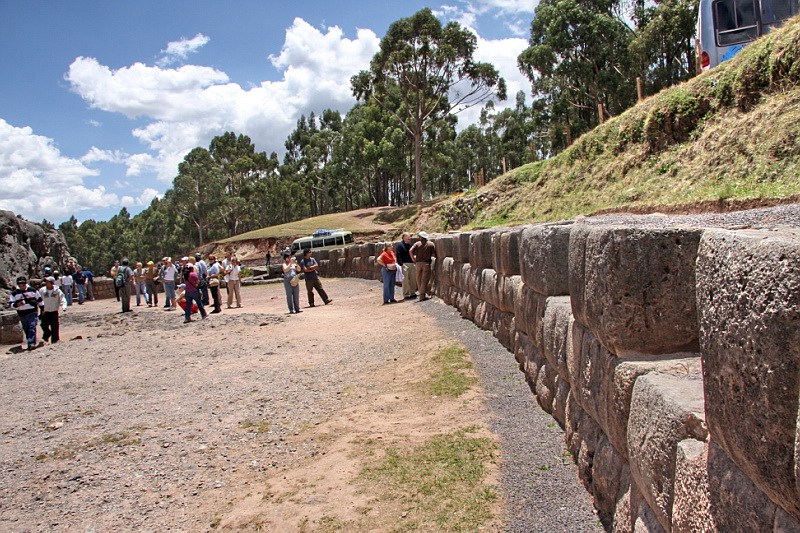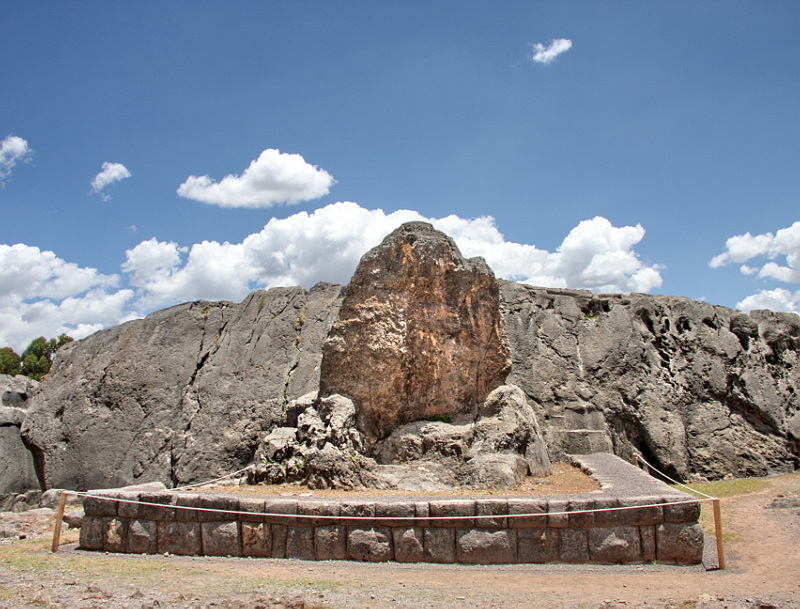Quenco Grande
These sites are limestone outcrops on which intricate mythical representations had been carved. It is believed that it was destined to the worship of the land. Its Quechua name means zigzag, probably due to the labyrinthine underground galleries, or due to the small channels carved on rocks with that shape.

This complex contains a semicircular amphitheatre that surrounds a natural carved stone. It also has a rocky projection decorated with a passage that leads to an underground hall, a complex of cultivation terraces, rooms and a drainage channels system destined to evacuate the water from the area. The amphitheatre is constituted by slight-curve wall of 50 meters long approximately, which exhibits 19 large niches.
The focal point of this layout is a stone whose original shape could have been a puma or a phallus. It was probably destroyed by the persevering colonial friars that pursued idolatries.

Behind that stone there is a rocky headland with a staircase carved on the bare rock that leads to the top. In this place starts the little zigzag channel that, as of a minor hole, descends and then bifurcates into one branch that follows the slope and a second one that goes up to the underground chamber inside the rocky place.
It could have been used to transport the votive chicha and the blood of llamas sacrificed in some ritual that has not been clarified yet. At the very top there are still some carved remains of what could have been a condor whose head was broken, and a puma. We can also appreciate the remains of a room.